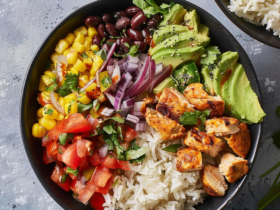In today’s fast-paced world, balancing health, taste, and budget can seem like a culinary juggling act. However, with a bit of planning and some savvy shopping techniques, you can create delicious, nutritious meals without breaking the bank. Here’s an enhanced guide to help you navigate the world of budget-friendly meal planning.
1. Plan Ahead and Prioritize
Before heading to the store, take a moment to plan your meals for the week. Consider what you already have in your pantry and fridge. By doing so, you can avoid unnecessary purchases and reduce food waste. Remember, a well-thought-out plan is the first step to saving money.
2. Embrace Seasonal Produce
Seasonal fruits and vegetables are not only fresher and tastier but also more affordable. They haven’t traveled long distances, which cuts down on transportation costs. Plus, supporting local farmers boosts your local economy.
3. Bulk Up
Purchasing in bulk can lead to significant savings. Items like grains, nuts, and spices are often cheaper when bought in larger quantities. Just ensure you have adequate storage space and remember to check the expiry dates.
4. Go Meatless Once a Week
Meat can be one of the most expensive items on your grocery list. Consider adopting a “Meatless Monday” approach. Dishes centered around legumes, tofu, or eggs can be just as satisfying and are often less expensive.
5. Shop with a List

Impulse purchases can quickly inflate your grocery bill. By shopping with a list, you’ll stay focused, reduce the temptation to buy on a whim, and ensure you only purchase what you need.
6. Look for Deals and Discounts
Keep an eye out for sales and discounts. Many stores offer loyalty programs or apps that provide exclusive deals. However, be cautious: just because something is on sale doesn’t mean it’s a good buy. Always consider if it fits into your meal plan.
7. Limit Convenience Foods
While pre-packaged meals and snacks are convenient, they often come with a higher price tag. Cooking from scratch is generally more economical and allows you to control the ingredients, ensuring a healthier outcome.
8. Opt for Store Brands
Name brands are often more expensive due to advertising costs. Store brands or generic options usually offer the same quality at a fraction of the price.
9. Preserve Freshness
Storing foods correctly can extend their shelf life, reducing waste. For instance, store tomatoes on the counter, not in the fridge, to maintain their flavor. Conversely, keep bread in the freezer if you don’t eat it quickly.
10. Grow Your Own
Even if you don’t have a green thumb, growing basic herbs or vegetables can be both fun and cost-effective. Start with easy-to-grow options like basil, mint, or cherry tomatoes. Not only will you save money, but you’ll also enjoy the unparalleled taste of home-grown produce.
Bonus Tip: Learn the Art of Leftovers
Reinvent your leftovers. Last night’s roasted vegetables can be today’s soup or salad. By getting creative, you ensure no food goes to waste, and you enjoy a variety of meals without extra effort. You’d be surprised at what you can conjure up with a bit of imagination!
Final Thoughts:
Budget-friendly meal planning doesn’t mean compromising on taste or nutrition. With a bit of foresight, creativity, and the above strategies, you can enjoy wholesome meals that are kind to your wallet. Remember, the key is in the planning!















Leave a Review